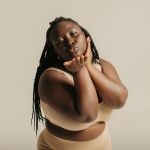A List of Sexualities You Should Totally Know By Now
Jump to Aromantic | Asexual | Autosexual | Autoromantic | Bicurious | Biromantic | Bisexual | Demisexual | Demiromantic | Heterosexual | Homosexual | Fluid | Lesbian | Pansexual | Queer | QuestioningMany different sexual orientations are still forgotten about or misunderstood. Let’s change that!
Even though the world is taking (slow) steps toward accepting people with sexual orientations and gender identities outside the “norm”, we still have a long way to go. A good step towards being a better ally to the LGBTQ+ community and understanding our sexualities better is to talk about the different sexual orientations that are out there!
So, in the spirit of breaking free from heteronormativity, we’re bringing you a list of commonly recognized sexualities, including the official terms used to describe them, and what they mean. Because there’s more than just “gay” or “straight”, trust us.
If you already know every orientation on this list? Share it with someone who doesn’t! Want to know about one orientation in particular? Use the links above to skip ahead.

First off,
What is sexual orientation?
Sexual orientation is an identity people give to themselves that describes how (or if) they experience romantic or sexual desire, as well as the gender(s) or sex(es) of the people they experience attraction towards.
Some people are attracted to everyone, and others, to no one. And they’re both great! If you want to learn more about people in minority sexual groups and explore your own sexuality, this list of sexualities will help you on your way.
Different sexual orientations and the words used to describe them.
Aromantic
An aromantic person is someone who experiences no, or next to none, romantic attraction to anyone. They can be attracted to people in other ways, such as physical attraction or platonic attraction, but they don’t desire or often feel comfortable in romantic relationships.
Asexual
An asexual person doesn’t experience sexual attraction, that is, feelings of finding someone sexually appealing and wanting to have sex with them. Some asexual people do have a libido and enjoy masturbation, while others don’t desire sex at all. Asexual people, like aromantic people, can experience other forms of attraction to people, like romantic attraction, and are able to find someone physically attractive without wanting to have intercourse with them.
Autosexual
Autosexual is a term for sexual attraction to oneself. Autosexual people prefer pleasuring themselves sexually over having intercourse with someone else.

Autoromantic.
An autoromantic is someone who is romantically attracted to themselves. Autoromantics have the same feelings for themselves that non-autoromantics have for their lovers. While they may still have romantic feelings for other people, they often prefer the relationship they have with themselves.
Bicurious
Someone who is bicurious is questioning or exploring bisexuality. They see themselves as being one particular gender orientation (for example, gay), but are curious to explore attraction to differently gendered people.
Biromantic
A biromantic person is someone romantically attracted to people of two or more genders, often including their own. For example, they might be romantically attracted to non-binary people, women, and men. Someone who identifies as biromantic may not experience any sexual attraction to their partners.
Bisexual
Bisexual people are sexually attracted to people of more than one gender. Again, this often includes attraction towards people of the same gender with which they identify themselves. The term bisexual tends to cover romantic as well as sexual attraction.

Demisexual
Demisexuality is a sexual attraction towards people only in specific circumstances. For many demisexuals, these specific circumstances are having a deep emotional connection. Demisexual people tend to engage in sex less than the general population, as it takes more for them to feel sexual desire for another person.
Demiromantic
Like a demisexual, demiromantic people feel attraction, this time romantic attraction, towards people only in special circumstances. For most demiromantics, it is difficult to feel romantically towards someone without having established an emotional connection beforehand.
Heterosexual
A heterosexual or “straight” person is someone sexually and romantically attracted to someone of the opposite gender or sex. While heterosexuality is still seen as the "norm" in our society, this is starting to change - certainly for the better.
Homosexual
Someone identifying as homosexual or “gay” is sexually and romantically attracted to people of the same sex or gender. Some people in the LGBTQ+ community find the term homosexual offensive as it has been historically used by homophobes in a derogatory way - as has the word “gay”, although this has been mostly reclaimed by the LGBTQ+ community today.
Fluid
People identifying as sexually fluid experience changes in their sexual orientation and attraction. They mostly do not identify as being any single orientation and find their attraction to people, romantic, sexual, or otherwise, changes over time, with context, and according to the people they meet.

Lesbian
A lesbian is a self-identifying woman who is sexually and romantically attracted to other self-identifying women.
Pansexual
Pansexuality is seen as similar to bisexuality. Pansexual people, however, are attracted to people as simply people, who they are (as opposed to their physical body), and without paying attention to their gender, sex, or sexuality.
Queer
Queer is a broader term used to self-describe people whose sexuality is not exclusively heterosexual and whose gender is not exclusively cisgender. The queer community is generally gender and sexual minorities.
Questioning
Someone who identifies as questioning is in the process of exploring their sexuality and considering a different sexual orientation for themselves than their previous one - and it’s very normal to be questioning!

I t’s more of a spectrum than a list of sexualities.
Sexual orientation is understood as a spectrum as opposed to a list of distinct categories. This list of sexualities is by no means complete, but it’s a good introduction to sexual identities that are still, even today, not talked about a lot. Check our blog if you want to learn more about different sexual orientations and non-monogamous relationships!
What is sexual orientation? It can only be defined by the individual, and fluidity is normal!
Has this list changed your perception of your own sexual orientation? Great! Has it made you more confused about where you sit on the spectrum? Don’t worry! You have all the time in the world to figure out your sexuality. And if you don’t? Well, hopefully, you at least have some fun on the way.









